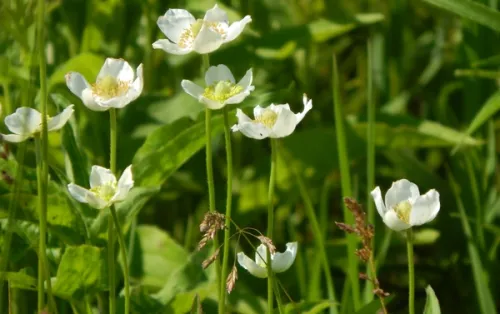Thimbleweed
Thimbleweed, also sometimes called Cylindrical Thimbleweed, is a perennial native to North America that thrives in prairies, meadows, and open woodland areas. It typically grows about 1 to 3 feet tall and features deeply divided, dark green leaves that form an attractive basal clump. In early to mid-summer, it produces upright stems topped with small, white, five-petaled flowers. These blossoms are followed by distinctive, elongated, thimble-shaped seed heads that are densely packed with cotton-like fibers. These seed heads provide enduring visual interest well into winter and are excellent for adding texture to dried floral arrangements.
Thimbleweed is well-adapted to a variety of garden settings, preferring full sun to light shade and well-drained soil. It is particularly effective in wildflower meadows, borders, and as part of a native plant garden where its unique seed heads can be showcased.
Details
Range Map
Ecological Benefits
Maintenance Tips
- Drought-tolerant once established; water regularly during the first growing season and sparingly thereafter.
- Deadhead flowers if seed spread is a concern, or leave seed heads to enjoy their winter interest.
- Prefers well-drained soils but can tolerate clay and sandy soil types if drainage is adequate.
- Apply a light layer of organic mulch to conserve moisture, suppress weeds, and maintain a clean appearance around the plant base.
- Monitor for pests and diseases, though thimbleweed is typically low-maintenance and disease-resistant.





